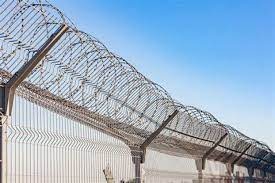Restoring Fort Barwara: Looking forward
When the sun rises in the early spring and illuminates the Aravalli range that towers above Chauth Ka Barwara hamlet, the 700-year-old Fort Barwara’s five-foot-thick and twenty-foot-tall wall provides an ideal framing for the mountain. The pristine, cloudless sky above the mild mountain slopes and the perimeter wall of the historic building in Sawai Madhopur, close to the Ranthambore forest, 169 kilometers from Jaipur in Rajasthan, is splattered with hues of orange, yellow, and red by the sun. Built in the former Ranthambore kingdom in 1417 by Maharaja Bheem Singh Chauhan, the fort occupies 5.5 acres. It is now the first Six Senses spa resort in India, with 48 suites, after ten years of renovation.

2011 saw the fort’s restoration to its former splendor and transformation into a five-star hotel thanks to the efforts of Prithviraj Singh, a descendant of the fort’s present owners, and Parul Zaveri and her late husband Nimish Patel of Panika, a conservation architecture company. Zaveri acknowledges, “It was scary when I first saw the site.” Over the ages, it has seen several modifications and wear and tear. It was originally used as a battle station with horse stables and a shop for weapons and ammunition. After 1947, it was abandoned and let nature to take its course. Hundreds of bats had taken up residence in the fort. There were tree and plant branches everywhere, which made the crevices in the walls deeper. The fort’s walls and other features were crumbling in places. It took a lot of effort, she adds, to make sure that the new buildings’ design and aesthetic carried over the historical value and previous look, while still making space for a luxury hotel.
The outside
The architects evaluated the decades’ worth of damage while also examining the original materials, architectural style, and plan of the fort. The fort complex’s structures were built in a variety of architectural styles at various points in history, according to the tastes, means, needs, and technological capabilities of each monarch. For example, the women’s palace, the Zanana Mahal, had Shekawati paintings and relief figures all over it, while the men’s palace, the Mardana Mahal, had walls that were five feet thick. The lounge and reception are now located at the Mardana Mahal.
One excellent example of adaptive reuse is the banquet hall. The tall pillar that supported the Mardana Mahal seemed to be hollow to the architects. They were correct; upon opening it, they found a sizable area underneath that may have used as a hiding spot during hostilities. It was transformed into a 200-person dining hall by the architects. With a view of the two watch towers of the fort, the central walkway leading to another courtyard is now a place for all-day eating. Ringing the historic courtyard, the architects transformed the Zanana Mahal and the auxiliary, unfinished British-era construction in the complex into a spa. The spa’s welcome room is now the temple next to the Mardana Mahal.
There was deterioration in part of the dome of the Kharbuja Mahal, which resembles a musk melon and today houses the owners’ rooms. To restore the dome to its original appearance from hundreds of years ago, the architects chose to rebuild the damaged section and fix the current one rather than demolishing the whole structure. An amphitheater has been created out of the property’s step-well. On the property are two temples. They have managed to preserve their sanctum sanctorums. According to Zaveri, “our goal was to recreate the regal atmosphere of Rajasthan’s royal forts and palaces.” The building was expanded to include the broad colonnaded hallways with traditional flooring in the chevron/leheriya pattern made of white marble, Dholpur beige, and red stone parapets from Kandla. “Adaptability was the overarching design concept. Essentially, turn the military fort into a five-star hotel by preserving and repurposing all of its current buildings rather than demolishing them,” she continues.
For many architects, restoring Rajasthan’s havelis, palaces, and forts is their specialty. The difficult thing is getting it correctly. However, as things become bad…







